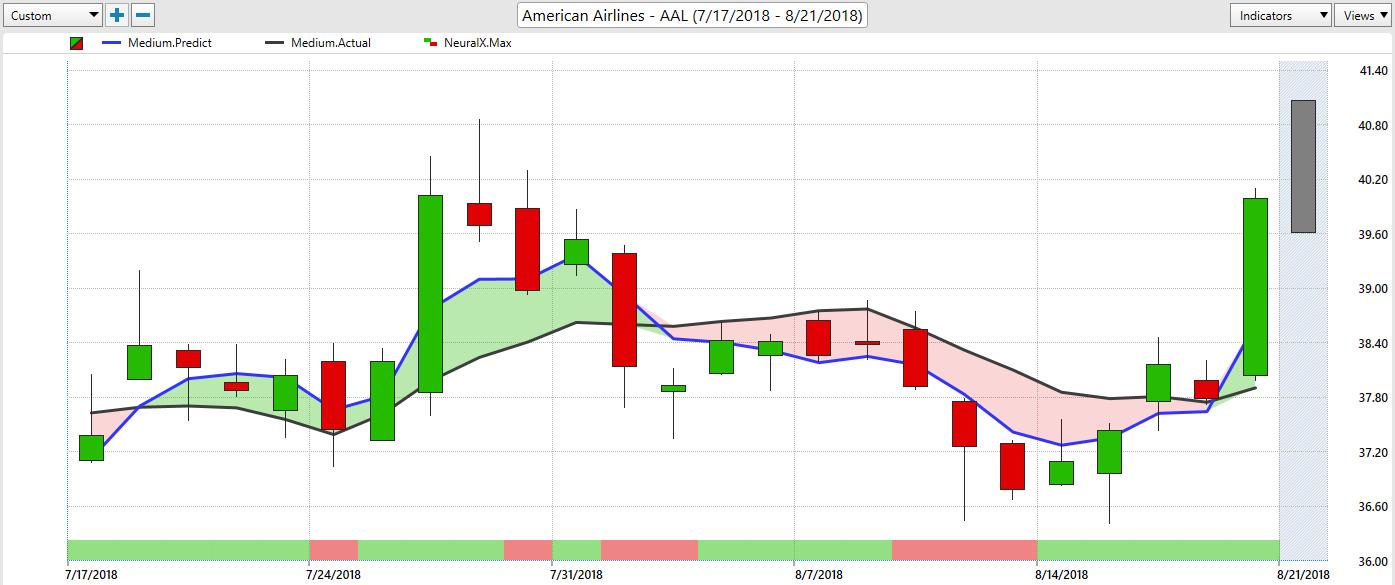Aal Stock: The Ultimate Guide To Understanding AirAsia’s Financial Backbone
Investing in aal stock can be both exciting and profitable if you know what you're doing. But let's face it, not everyone understands the ins and outs of this aviation giant’s financial journey. AirAsia, one of Asia's leading low-cost carriers, has made waves in the market with its aggressive expansion and innovative business model. So, buckle up as we dive deep into the world of aal stock and uncover what makes it tick.
Now, if you're reading this, chances are you're either curious about AirAsia's stock performance or you're looking to dip your toes into the world of aviation investing. Either way, you're in the right place. We’ll break it down for you in a way that’s easy to digest, so even if you're a complete newbie, you'll walk away with some serious knowledge.
Before we get into the nitty-gritty, let’s address the elephant in the room: Why should you care about aal stock? Well, AirAsia isn’t just any airline—it’s a game-changer in the aviation industry. Its stock, listed on Bursa Malaysia, has been a hot topic among investors, analysts, and aviation enthusiasts alike. So, whether you're in it for the long haul or just looking for a quick trade, understanding aal stock is crucial.
Read also:Pope Francis Evangelii Gaudium A Call To Joyful Mission And Global Solidarity
What Exactly is Aal Stock?
Let's start with the basics. Aal stock refers to the publicly traded shares of AirAsia Berhad, a company that operates under the ticker symbol "AIRC". This stock represents ownership in one of Asia’s largest low-cost carriers. When you buy aal stock, you're essentially becoming a part-owner of the company. Pretty cool, right?
But here’s the kicker: AirAsia isn’t just an airline. It’s a conglomerate that spans multiple sectors, including e-commerce, logistics, and fintech. This diversification makes aal stock an intriguing investment opportunity for those looking to tap into the growing Asian market.
Now, here’s a fun fact: AirAsia was once a struggling Malaysian Airlines subsidiary before Tony Fernandes and his team turned it into a global powerhouse. And if history is any indication, the company has a knack for bouncing back from challenges, making its stock an attractive option for investors.
Why Should You Care About Aal Stock?
If you’re wondering why aal stock deserves your attention, here’s the lowdown. AirAsia’s aggressive expansion strategy, combined with its cost-effective business model, has positioned it as a leader in the low-cost aviation sector. This means that when the travel industry thrives, so does aal stock.
But that’s not all. The company’s diversification into digital services has opened up new revenue streams. For instance, AirAsia Super App, which offers everything from food delivery to travel bookings, has become a significant contributor to the company’s bottom line. So, if you're looking for a stock that’s not just tied to aviation but also to the booming digital economy, aal stock might just be your golden ticket.
Key Factors Influencing Aal Stock Performance
Before you jump into investing, it’s essential to understand the factors that influence aal stock performance. Here are a few key points:
Read also:Pope Francis Encyclicals A Deeper Dive Into The Popes Messages
- Global Travel Trends: As more people travel, AirAsia’s passenger numbers increase, directly impacting its stock price.
- Fuel Prices: Being an airline, fuel costs are a significant expense. Fluctuations in fuel prices can have a substantial impact on profitability.
- Economic Conditions: A strong economy usually means more disposable income for people to spend on travel, boosting aal stock.
- Regulatory Changes: Government policies and regulations can affect AirAsia’s operations, which in turn influences its stock performance.
Understanding the Financial Health of AirAsia
So, how’s AirAsia’s financial health? Let’s take a closer look at some key financial metrics that can give you a better understanding of aal stock’s potential:
Revenue Growth: Over the past few years, AirAsia has shown steady revenue growth, driven by its expanding network and diversified business model.
Profit Margins: While profit margins can fluctuate due to factors like fuel prices and exchange rates, AirAsia has consistently worked on improving its operational efficiency to maintain profitability.
Debt Levels: Like many airlines, AirAsia carries a fair amount of debt. However, the company has been proactive in managing its debt through strategic partnerships and refinancing.
AirAsia’s Revenue Streams Beyond Aviation
One of the most exciting aspects of aal stock is AirAsia’s diversified revenue streams. Here’s a quick breakdown:
- AirAsia Super App: This digital platform offers a range of services, from food delivery to travel bookings, generating significant revenue.
- AirAsia Logistics: The company’s logistics arm has been growing rapidly, catering to the increasing demand for e-commerce delivery services.
- AirAsia Digital: This division focuses on fintech and digital solutions, further diversifying AirAsia’s income sources.
Historical Performance of Aal Stock
Let’s take a trip down memory lane and look at how aal stock has performed over the years. While the stock has seen its fair share of ups and downs, it has consistently shown resilience in the face of challenges.
For instance, during the pandemic, like many airlines, AirAsia faced a significant downturn. However, the company’s diversified business model helped it weather the storm. As travel restrictions eased, aal stock rebounded strongly, reflecting the company’s ability to adapt and thrive.
Key Milestones in Aal Stock’s Journey
Here are a few key milestones in aal stock’s journey:
- 2004: AirAsia went public, listing its shares on Bursa Malaysia under the ticker symbol "AIRC".
- 2010: The company expanded into the Indonesian market, marking a significant step in its regional expansion strategy.
- 2020: Despite the pandemic, AirAsia launched its Super App, diversifying its revenue streams and positioning itself for future growth.
Investing in Aal Stock: Tips and Tricks
If you’re considering investing in aal stock, here are a few tips to keep in mind:
Do Your Research: Understand the company’s financial health, market position, and future growth prospects before making any investment decisions.
Stay Updated: Keep an eye on global travel trends, fuel prices, and regulatory changes that could impact AirAsia’s operations and stock performance.
Consider Long-Term Potential: While short-term fluctuations are inevitable, AirAsia’s long-term growth potential makes aal stock an attractive option for investors.
Common Mistakes to Avoid
Here are a few common mistakes to avoid when investing in aal stock:
- Overreacting to Short-Term Fluctuations: Stock prices can be volatile, but it’s important to focus on the long-term trend.
- Ignoring Diversification: Don’t put all your eggs in one basket. Diversify your portfolio to minimize risk.
- Not Staying Informed: The market is constantly evolving, so staying informed is key to making smart investment decisions.
Future Outlook for Aal Stock
Looking ahead, the future looks promising for aal stock. With the travel industry bouncing back post-pandemic and AirAsia’s continued expansion into digital services, the company is well-positioned for growth.
Moreover, as more people in Asia gain access to affordable air travel, AirAsia’s passenger numbers are expected to increase, driving up its stock price. Add to that the company’s focus on sustainability and innovation, and you’ve got a recipe for success.
Potential Challenges
Of course, no investment is without its challenges. Here are a few potential hurdles that could impact aal stock:
- Economic Downturns: A slowdown in the global economy could affect people’s ability to travel, impacting AirAsia’s revenue.
- Increased Competition: As more players enter the low-cost aviation market, AirAsia may face stiffer competition.
- Regulatory Changes: Any changes in government policies could affect AirAsia’s operations and profitability.
Conclusion: Is Aal Stock Worth Your Investment?
In conclusion, aal stock offers a unique opportunity for investors looking to tap into the growing Asian aviation and digital markets. While there are risks involved, AirAsia’s strong financial health, diversified revenue streams, and resilient business model make it a compelling choice.
So, whether you're a seasoned investor or a newbie looking to dip your toes into the stock market, aal stock is definitely worth considering. Just remember to do your research, stay informed, and consider both the risks and rewards before making any investment decisions.
And hey, if you found this article helpful, don’t forget to share it with your friends and leave a comment below. Let’s keep the conversation going!
Table of Contents
- What Exactly is Aal Stock?
- Why Should You Care About Aal Stock?
- Key Factors Influencing Aal Stock Performance
- Understanding the Financial Health of AirAsia
- AirAsia’s Revenue Streams Beyond Aviation
- Historical Performance of Aal Stock
- Investing in Aal Stock: Tips and Tricks
- Common Mistakes to Avoid
- Future Outlook for Aal Stock
- Potential Challenges
Article Recommendations


